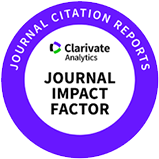The quality traits of pork belly and impact factors of quality
Received: Nov 18, 2024 ; Revised: Jan 13, 2025 ; Accepted: Feb 02, 2025
Published Online: Feb 12, 2025
Abstract
Pork belly is one of the most valuable primal cuts of pork with high preferences. Although meat quality is becoming increasingly important, defining pork belly quality is challenging owing to the structure and diversity of the preferred characteristics. This study identified the factors influencing pork belly quality traits through a literature review. In total, 55 articles related to pork belly quality were selected and summarized. The quality traits of pork belly are considered to be various factors, including belly yield (weight, length, thickness, etc.), firmness, fatty acid composition, color, and sensory properties. The quality of pork belly is influenced by various factors, such as sex, genetic parameters, carcass weight, and diet. A more diverse approach is required to comprehensively understand the quality traits and impact factors of pork bellies.













